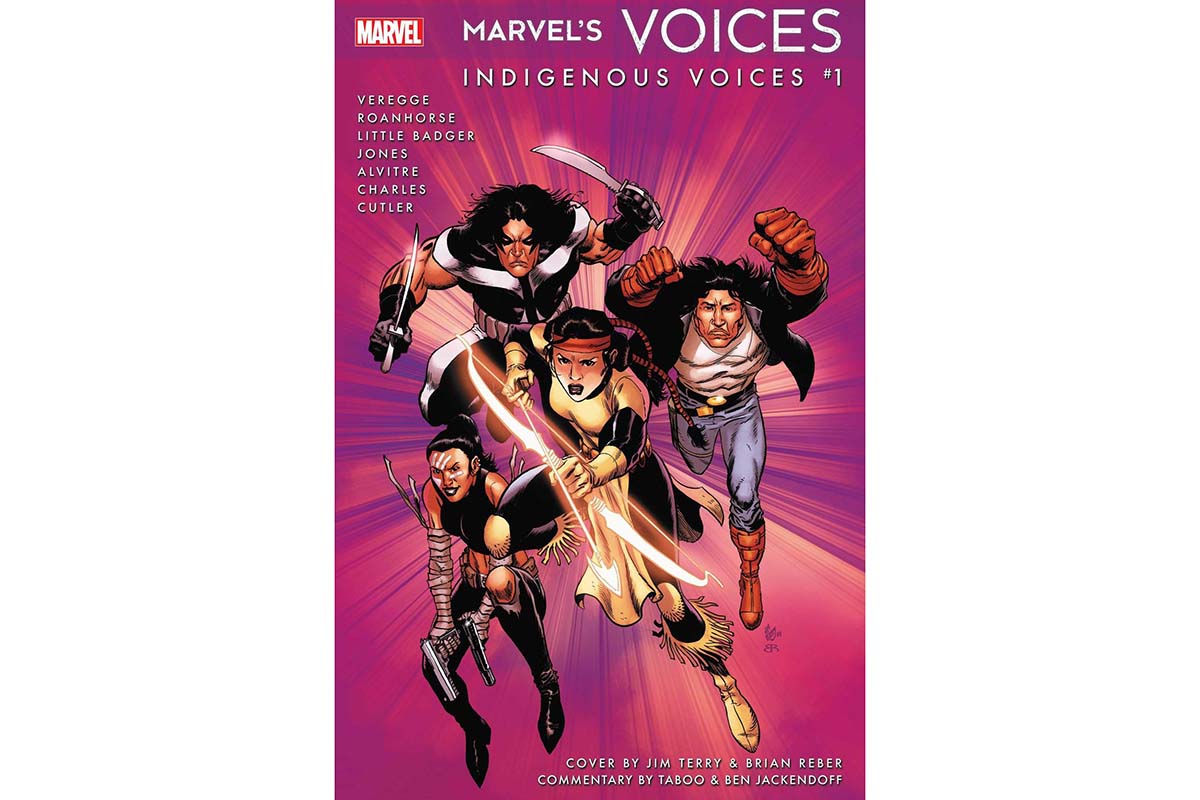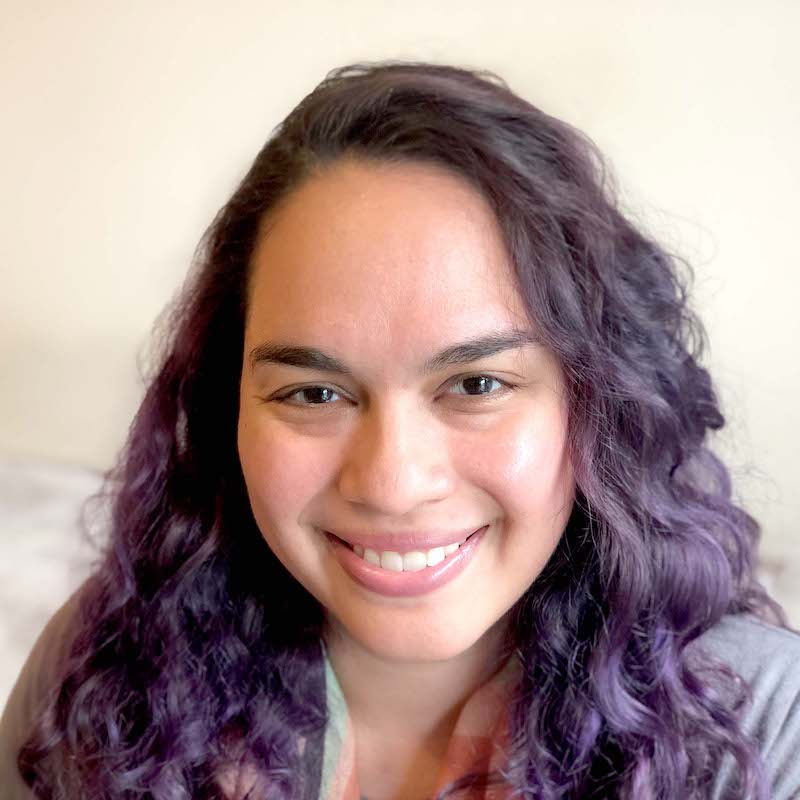
- Details
- By Monica Whitepigeon
In the wake of comic book genre success, both on and off the big screen, the industry continues to move towards more inclusive and diverse storylines, especially with the November release of “Marvel’s Voices: Indigenous Voices #1.”
This initial installment offers a comprehensive and tantalizing reintroduction to Marvel’s established Native heroes and heroines told through varying Indigenous perspectives and art styles. Native authors and comic artists were recruited to rejuvenate the company’s overshadowed Indigenous characters by recontextualizing their experiences.
Featured writers and artists include Jeffrey Veregge (Coast Salish), Weshoyot Alvitre (Tongva), Darcie Little Badger (Lipan Apache), Kyle Charles (Whitefish Lake First Nation), Rebecca Roanhorse (Ohkay Owingeh), David Cutler (Qalipu Mi’kmaq First Nation) and Stephen Graham Jones (Blackfeet Nation).
The reader is immediately introduced to Uatu the Watcher, drawn in Veregge’s formline style. The celestial Uatu explains how he collects Earth’s heroes’ heralding stories and specifically concentrates on those with Native backgrounds. The full-page spread showcases 16 characters with short bios. The series will delve more into these story arcs as it progresses.
This volume is broken into three main storylines that focus on Maya Lopez, a.k.a. Echo, a deaf Cheyenne/Latina warrior from the Daredevil series, Dani Moonstar, a.k.a. Mirage, an illusionist Cheyenne mutant from the New Mutants series, and Silver Fox, a regenerative Blackfoot mutant from the X-Men series. Like many Native people, each heroine comes from distinct and diverse backgrounds that the writers and artists were able to expand upon. The contributor’s unique perspectives stay true to the idea of Indigenous Futurism with themes of past, present and future.
Initially set on Earth, the audience meets Echo, who is looking completely annoyed as she checks her text messages from the various men in her life, such as Daredevil and Wolverine. Her visceral nature is reflected in Alvitre’s gritty, dynamic art style as she shows the fluidity and precision of Echo’s combat. She is soon recruited to assist an alien community and travels to the planet Geunee to confront a villainous oppressor.
Despite the writer Roanhorse’s controversial background, Echo is a heroine worthy of attention and character development. The plot touches on matters of sovereignty and matriarchal societies that translate to distant worlds. Echo’s complex past helps her confront future challenges and appreciate what she still has.
The following story features Mirage and her partner Wolfsbane as they investigate a mysterious incident at a fair in Yavapai County, Ariz. Mirage’s personal connection to the investigation grows more evident when she realizes someone else has her similar abilities to amplify and manifest a person’s fears and desires. New and familiar mutants appear throughout the story with a familial-type bond that unites the characters.
Charles’s artwork colorfully captures the feeling of the Southwest landscape and contemporizes regional Native culture while Little Badger’s writing addresses racial tensions, jurisdiction concerns with law enforcement and community healing.
The final episodic tale goes back in time to the settler encroachment era in the Northwest territories. There, Silver Fox and her husband Trigo sabotage a local fort after Trigo witnesses horrific and violent visions involving this encampment. Conversing in Siksiká, the Blackfoot language, the couple appears conflicted about their methods but ultimately determined to do what they can.
Cutler's deep shadows and exaggerated expressions feed into the dark reality of survival that Jones presents. Jones answers the hypothetical question, and with enough foresight, how far would a Native person be willing to go to protect and secure a better future?
Overall, “Indigenous Voices #1” is a worthwhile read with stunning visual works that offer varying perspectives of the Native experience while tapping into superhero culture.
More Stories Like This
Graffiti & Street Artists Paint at Eagle Butte Mural Sites on Day 2 of the 11th Annual RedCan Invitational Graffiti JamCheyenne River Youth Project Showcases RedCan at Smithsonian Folklife Festival, Prepares to Kick Off 2025 Graffiti Jam This Wednesday, July 9
"Jim Thorpe: Lit by Lightning" Director Chris Eyre: 'Thorpe was one of the greatest Americans to Ever Live.'
“First Voices Radio” to Air Final Broadcast on Sunday, July 6, 2025
First American Art Highlighted at Artesian Arts Festival
Help us tell the stories that could save Native languages and food traditions
At a critical moment for Indian Country, Native News Online is embarking on our most ambitious reporting project yet: "Cultivating Culture," a three-year investigation into two forces shaping Native community survival—food sovereignty and language revitalization.
The devastating impact of COVID-19 accelerated the loss of Native elders and with them, irreplaceable cultural knowledge. Yet across tribal communities, innovative leaders are fighting back, reclaiming traditional food systems and breathing new life into Native languages. These aren't just cultural preservation efforts—they're powerful pathways to community health, healing, and resilience.
Our dedicated reporting team will spend three years documenting these stories through on-the-ground reporting in 18 tribal communities, producing over 200 in-depth stories, 18 podcast episodes, and multimedia content that amplifies Indigenous voices. We'll show policymakers, funders, and allies how cultural restoration directly impacts physical and mental wellness while celebrating successful models of sovereignty and self-determination.
This isn't corporate media parachuting into Indian Country for a quick story. This is sustained, relationship-based journalism by Native reporters who understand these communities. It's "Warrior Journalism"—fearless reporting that serves the 5.5 million readers who depend on us for news that mainstream media often ignores.
We need your help right now. While we've secured partial funding, we're still $450,000 short of our three-year budget. Our immediate goal is $25,000 this month to keep this critical work moving forward—funding reporter salaries, travel to remote communities, photography, and the deep reporting these stories deserve.
Every dollar directly supports Indigenous journalists telling Indigenous stories. Whether it's $5 or $50, your contribution ensures these vital narratives of resilience, innovation, and hope don't disappear into silence.
 The stakes couldn't be higher. Native languages are being lost at an alarming rate. Food insecurity plagues many tribal communities. But solutions are emerging, and these stories need to be told.
The stakes couldn't be higher. Native languages are being lost at an alarming rate. Food insecurity plagues many tribal communities. But solutions are emerging, and these stories need to be told.
Support independent Native journalism. Fund the stories that matter.
Levi Rickert (Potawatomi), Editor & Publisher

